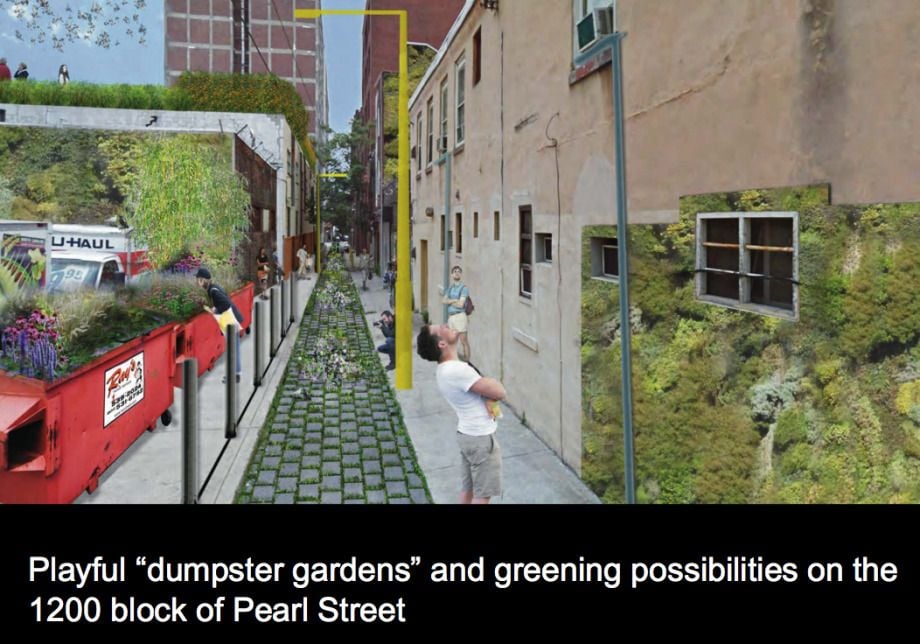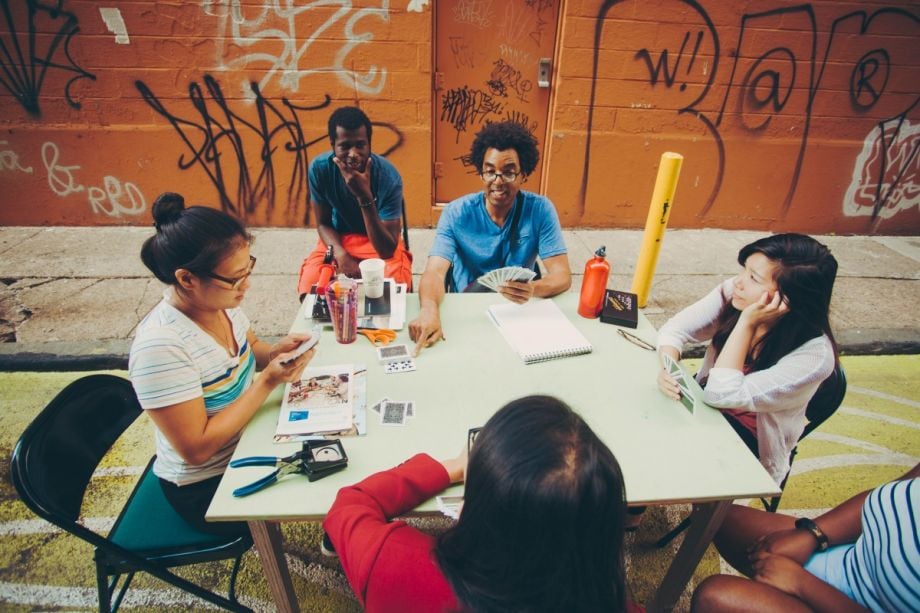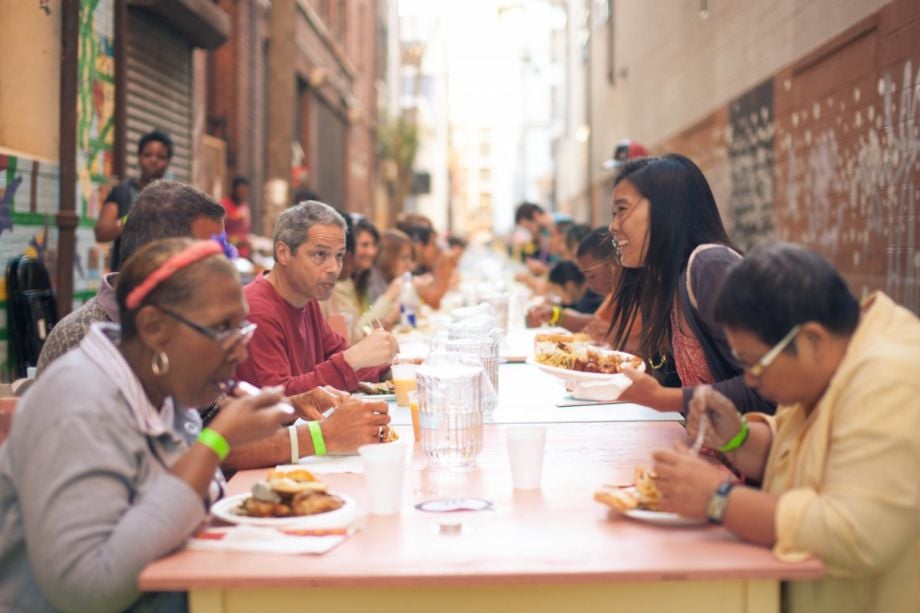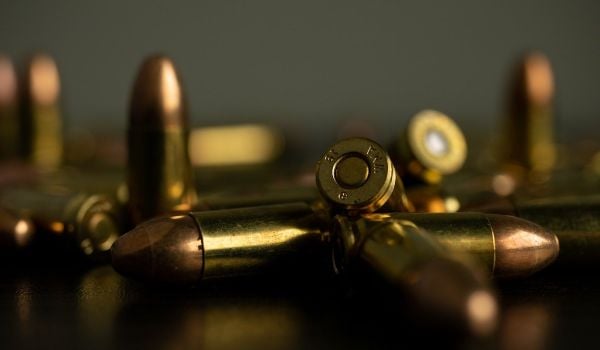As cities across the country wrestle with income inequality and gentrification’s byproducts, one Philadelphia project is a good example of an all-hands-on-deck approach to revitalization. Philadelphia’s Pearl Street looks like a dingy, low-lit alleyway more than an inviting thoroughfare as it cuts through the Chinatown/Callowhill neighborhood from North 10th street to North Broad Street. However unremarkable looking it is, Pearl is exemplary in its function as the backyard to a variety of organizations and businesses — luxury lofts, schools, social service agencies, a rescue mission for the homeless, and arts groups like the Asian Arts Initiative.
In 2013, the Asian Arts Initiative (AAI) embarked on a multiyear artists’ residency on the site called the Pearl Street Project (as a part of their Social Practice Lab), which combines beautification, performance art and community-building. Artists have been invited to transform the space through projects and events and collaborate with community stakeholders on visions for its future.
During the first year, landscape architect Walter Hood and his firm, Hood Design, engaged with AAI and its neighbors through several ambitious “aesthetic interventions” on the street, including Dumpster gardens, solar-powered LED lights serving as a nighttime constellation, and a pop-up art gallery where Pearl Street intersects with the Reading Viaduct (site of a proposed elevated park similar to New York’s High Line). Since the project began, AAI’s executive director, Gayle Isa, says, “[AAI has] been able to get to know a lot more about the rhythm of the street and also this part of our neighborhood more deeply.”

Hood Design rendering imagines greening along Pearl Street.
Since January, artist Rick Lowe, a social practice artist most well known for founding the Houston arts and cultural community Project Row Houses, has been in residence, helping to continue to reclaim the underdog space. He and AAI have experimented with “maintenance art,” or making the cleaning of the space an act of performance art.
Lowe thinks that having people from all walks of life take on tasks such as picking up litter has more of a lasting impact than, for example, paying someone with a business improvement district uniform to do it. “You have to do it with the motivation of the poetic meaning and value for the people that are doing it and not so much on the result,” Lowe says. “The most efficient way would be to pay someone to do it. But when you pay someone, you might be more expedient in terms of keeping the place clean, but you might miss out on the opportunity of actually empowering someone to change the way they see themselves within the space. That ultimately has a much stronger impact than just keeping it clean.”
Two locations on Pearl Street have suggestive meaning for the project: The Goldtex Building, a newly constructed luxury loft building, and the Sunday Breakfast Rescue Mission, a homeless shelter, both flank the block the Asian Arts Initiative sits on.
“To me, [Pearl Street] was very symbolic of the overall dynamics that are happening in the rest of the city and the rest of the country,” says Lowe. “There’s the dynamic of having rejuvenation of real estate, and there’s a certain kind of excitement about that, but there’s also a little bit of concern for the existing population … The strategies of working with the people moving into the new developments is a bit simpler than working with the existing population when it’s a homeless population. So we’ve focused most of our efforts toward that population to keep them connected, at some level, to the community as it continues to change.”
Lowe hopes his work makes Hood’s work seem less fanciful and more of a matter-of-fact reflection on the potential of how people can rally around space long-term. “If my work is to be successful, it is to continue to cultivate the groundwork to bring [Walter Hood’s] work to fruition,” he says.

Artist Rick Lowe participates in a game day on Pearl Street. (Photo by Tim Kyuman Lee)
The annual Pearl Street Block Party is an opportunity to show off the intimate work of the Pearl Street Project to big crowds. The event (this year on September 27th) features live performances, music, interactive art projects and culminates in a community feast for all of the Asian Arts Initiative’s neighbors.
This year, Isa says they’ll be laying sod down to emulate the street’s future greening. Hood Design will also be presenting prototypes of periscopes and other ideas that will hopefully inspire businesses and residents to open up some of the boarded-up windows and doors, adding fresh eyes on the street.
Isa says that at the beginning of the project, AAI was “very selfishly motivated by seeing the blight, in particular, along the wall immediately north of our building and thinking that, as an arts organization, wouldn’t it be great to have an outdoor art gallery?” Over the course of the project, they’ve begun to understand the “deeper layers of complexity and potential of Pearl Street as a social space and symbolic space connecting so many people in the neighborhood.”
The Equity Factor is made possible with the support of the Surdna Foundation.

Alexis Stephens was Next City’s 2014-2015 equitable cities fellow. She’s written about housing, pop culture, global music subcultures, and more for publications like Shelterforce, Rolling Stone, SPIN, and MTV Iggy. She has a B.A. in urban studies from Barnard College and an M.S. in historic preservation from the University of Pennsylvania.

















